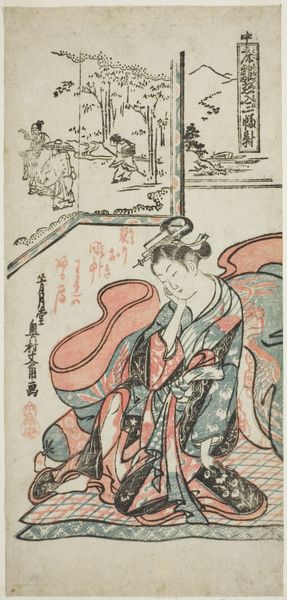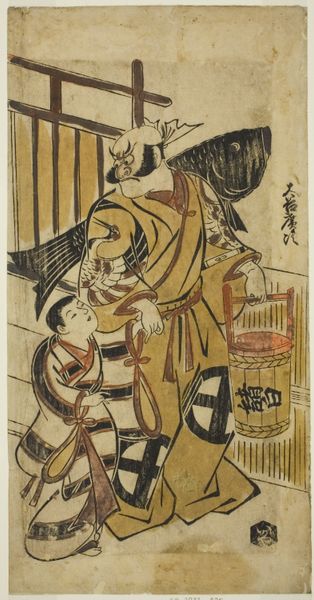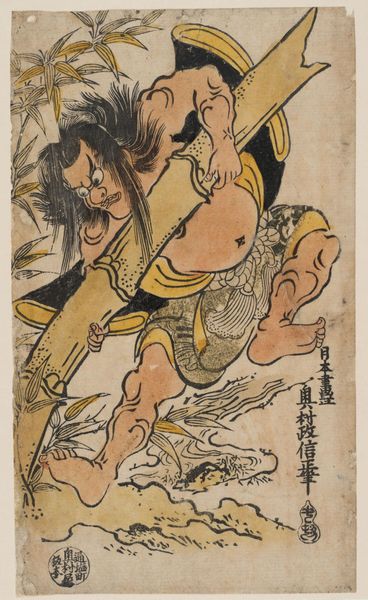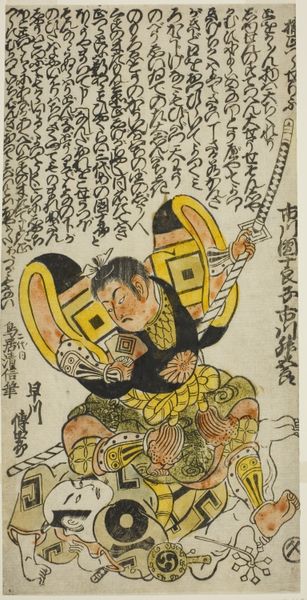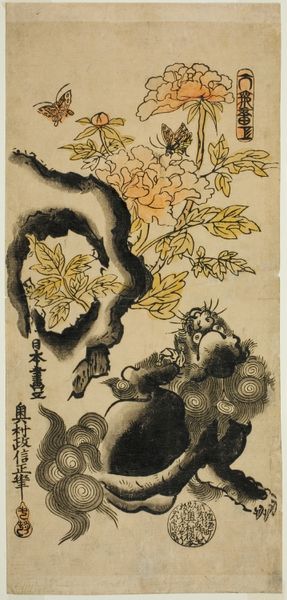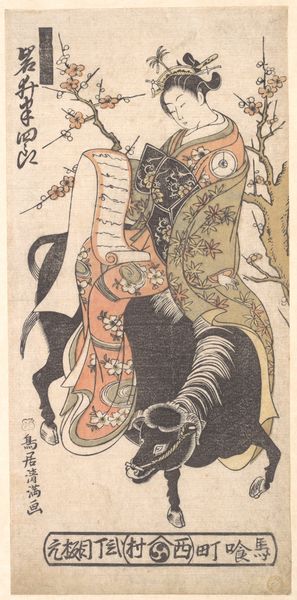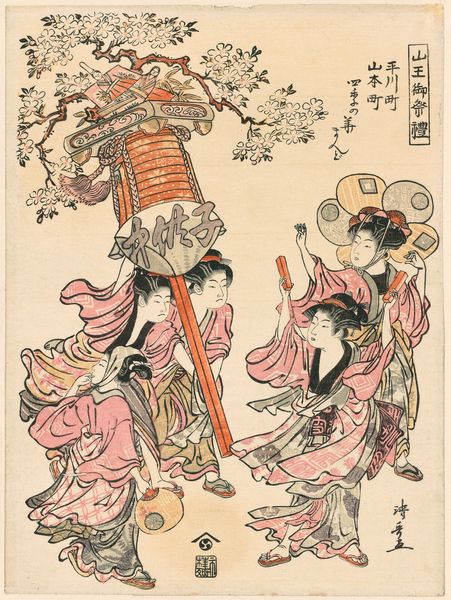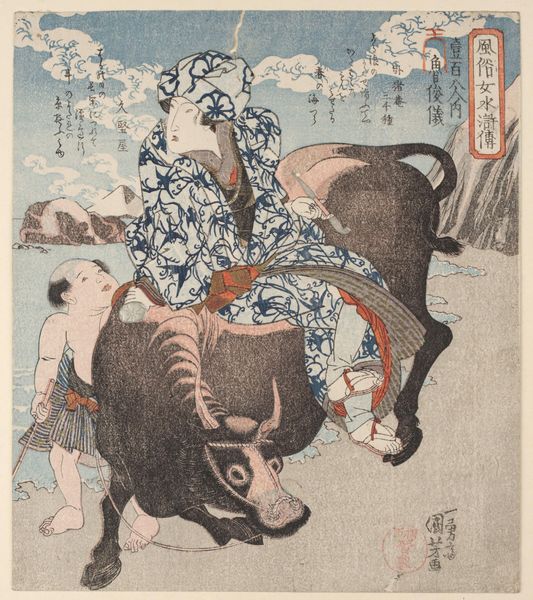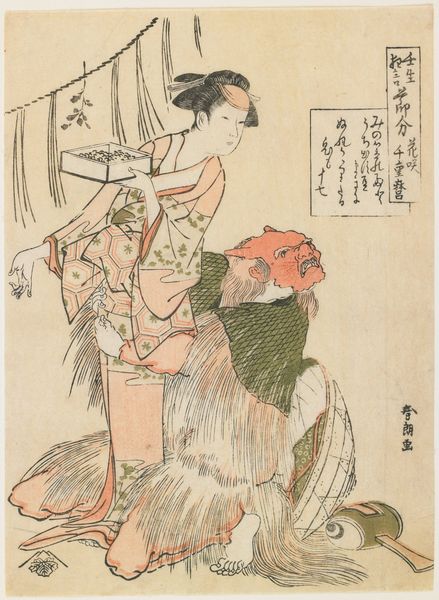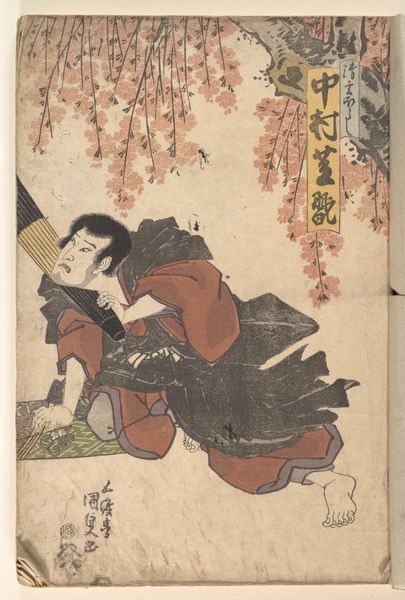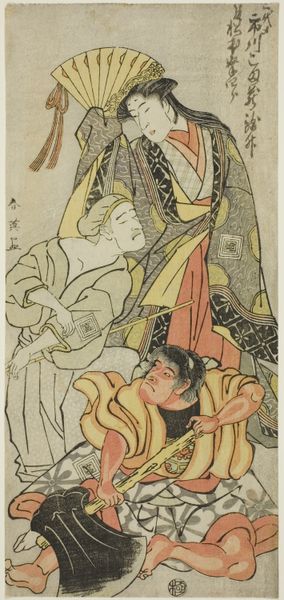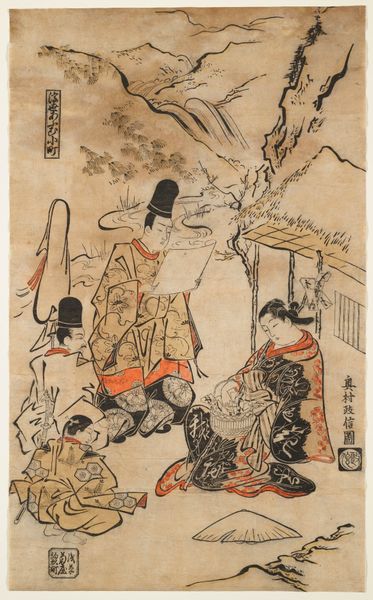
The Chinese sennin Ch'en Nan (Japanese "Chinnan") 1712 - 1732
0:00
0:00
#
toned paper
#
ink drawing
# print
#
pen sketch
#
asian-art
#
japan
#
personal sketchbook
#
ink drawing experimentation
#
pen-ink sketch
#
men
#
pen work
#
sketchbook drawing
#
watercolour illustration
#
sketchbook art
Dimensions: Overall: 11 3/4 x 6in. (29.8 x 15.2cm)
Copyright: Public Domain
Curator: Nishimura Shigenaga’s print, created sometime between 1712 and 1732, captures “The Chinese sennin Ch'en Nan," also known as "Chinnan" in Japanese. It’s currently part of the collection here at The Metropolitan Museum of Art. Editor: The immediate feeling I get is one of raw energy and defiant power, but there is also some kind of visual discord. I can’t help but to notice a lot of movement. The composition and style clash, the figure sits perched on what might be clouds, looking up at a dragon coming out of a tea-cup held aloft! It’s wonderfully odd! Curator: It certainly is. Consider the time and social setting in which this work was made; Edo period Japan. Printmaking flourished as a way to widely distribute imagery across the growing urban classes, to a degree we may see a comparison to our social media. In Japan at the time, depictions of Chinese sennin, immortal or enlightened beings were very popular, even fashionable, and served multiple functions. They were often aspirational figures, pointing to philosophical or religious virtues. Editor: So, the image becomes part of a larger conversation around spirituality, but made more available and accessible to the growing merchant classes? I find myself looking closely at the sennin's posture. There is something radical about that pose – bare legs splayed, shoulders arched, practically challenging the cosmos. It disrupts typical conventions. Curator: The choice to show him semi-nude, while also pointing towards the importance of Buddhism makes a provocative statement about challenging traditional expectations. Remember too, while this could have circulated to a broad audience, the refinement of the ink drawing suggests this might have also been intended for more elite artistic circles. It walks a fascinating line between accessibility and artistic ambition. Editor: Which is interesting, isn’t it? This tension—between the spiritual and the corporeal, the accessible and the elite. And the dragon emerging from what seems like an everyday tea bowl - these paradoxes draw attention to those moments of intersection, pushing back on those established social categories. Thanks for pointing out all of those interesting social considerations! Curator: It’s all there for the looking. Hopefully it encourages a new reading to understanding how the circulation and consumption of these works functioned as sites for navigating cultural identity and social mobility within their contexts. Editor: Agreed, and seeing the piece this way challenges me to reconsider assumptions, to actively seek alternative stories. I will have plenty to consider.
Comments
No comments
Be the first to comment and join the conversation on the ultimate creative platform.
